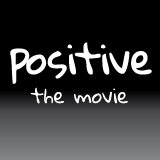What’s This?
When Gennady Stolyarov II was five years old, living in Belarus as the Soviet Union teetered on the brink of collapse, he asked his mother what happens to people when they grow up.
“They go to school,” she answered.
And then?
“They work and get married.”
And then? And then?
Eventually, his mother ran out of answers. “And then they die,” she said.
So begins Stolyarov’s Death Is Wrong, a children’s book that describes the author’s struggle with the concept of death. The narrative refutes the notion that death is the inevitable conclusion of life. Stolyarov hopes it will teach children that bodily decline is, in fact, a state that can and must be overcome through technological progress.
Referring to his first encounter with the concept of death, Stolyarov tells Mashable, “I was bewildered. Why do innocent people who have done nothing wrong deserve the death penalty?”
Image: GENNADY STOLYAROV II
Popularized by researchers like gerontologist Aubrey de Grey and futurist Ray Kurzweil (who predicts a machine will be able to pass the Turing Test by the year 2029), the doctrine of transhumanism holds that humans can transcend their physical limitations using technology. Central to this philosophy is the belief that technology will eventually be able to extend human life spans by hundreds of years, or perhaps indefinitely.
Stolyarov, a transhumanist philosopher and activist, wrote and published Death Is Wrong in November 2013. His wife, Wendy, contributed the illustrations. In February, Stolyarov launched an Indiegogo campaign to print 1,000 copies of the book, in order to distribute them to parents and schools around the country. The campaign has raised a third of its $5,000 goal so far, with 39 days left at the time of writing, and Stolyarov has been able to ship several dozen copies already.
But why target children? Why not write the book for an adult audience, people who could actively begin contributing to the life-extension movement?
“As adults, the ideas of transhumanism are widely available,” Stolyarov says. “There are hundreds of articles on recent scientific breakthroughs online. Not so for kids. When most kids learn about death, the response from adults is to tell them death is inevitable, but it’s far enough away that kids should focus on day-to-day life.”
The book, written for children ages eight and above, is filled with more text — not to mention more philosophic and scientific reasoning — than the average Dr. Seuss. The sentences are simple, but the concepts are complex, and it’s not always uplifting. Early on, Stolyarov lists the many ways a child might die: illnesses, car crashes, falls. He then enumerates, with derision, the religious and secular justifications parents use to pacify children when they first learn about death. He explains why, in his view, they are all wrong.
Its final message is a call to action: Dying is wrong, children, but through scientific progress you can make it right.
“You could live to see the most amazing scientific and technological wonders, like space elevators, settlements on other planets and in orbit around them, underwater cities, and tiny nanorobots that could repair anything that gets damaged – including you,” he writes.
Bristlecone pines (pictured) are some of the oldest trees in existence. In ‘Death Is Wrong,’ Stolyarov mentions ‘Methuselah,’ a bristlecone pine growing in California’s White Mountains, which has been alive for nearly 5,000 years.
Stolyarov isn’t concerned that the book may be too mature for its audience. “Kids are very willing to learn,” he says. “They learn new terms all the time. They’re exposed to new vocabulary at school, as they find out more about the world. I don’t see it as necessary to dumb things down for them.”
In the book, as in conversation, Stolyarov uses the term “senescence” rather than “aging” to describe the slow crawl toward physical enfeeblement and death. “Senescence is the decay [of the body], whereas aging is just the accumulation of numerical age,” he explains. “In our culture, there’s been this inextricable association between getting older and getting frailer. I want people to start thinking about the possibility that they could get older and actually become healthier, more youthful, as some of these treatments for biological decay come online.”
Death Is Wrong has been quietly making the rounds among a largely approving futurist community. When it was first published, journalist and transhumanist philosopher Zoltan Istvan described the book as, “fun to read and important in what it tries to accomplish.”
Theories abound as to whether technological progress will really result in the betterment of mankind. Columbia Law School professor Tim Wu, writing in The New Yorker, warned that technology may create a culture of complacency, as opposed to a higher morality. “If we’re not careful, our technological evolution will take us toward not a singularity but a sofalarity,” he cautioned. “That’s a future defined not by an evolution toward superintelligence but by the absence of discomforts.”
The future Wu envisions is one in which the comforts afforded by technology persuade humans that they no longer need to strive to make the world — and ourselves — better.
Turritopsis dohrnii (formerly known as T. nutricula) is effectively immortal. This microscopic jellyfish is the only animal capable of reverting to a younger stage after reaching sexual maturity. T. dohrnii is mentioned in ‘Death Is Wrong’ as an example of biological rejuvenation.
Image: Alvaro E. Migotto, Cifonauta Marine Biology Image Database
This is precisely Stolyarov’s fear: If children are not taught that death can be overcome, they will never strive to overcome it. “Now that technological progress could bring us into the bright age of indefinite longevity within our lifetimes, every atavistic remnant of the old death acceptance poses a barrier that must be surmounted,” he wrote in a blog post.
Parents who share his philosophy would therefore be wise to inoculate their children against “death acceptance” early, Stolyarov says. “Ideally, they would walk away with a motivation to do something about this dragon tyrant in the room, this problem of death. I don’t want these vestigial forms of thinking to essentially cause mass suffering and death. We need to push for these [life-extending] technologies to be invented as early as possible, as effectively as possible.”
However, he acknowledges that not all parents will be willing to teach this lesson. And some parents, of course, are apt to think the notion of transcending death is a load of hooey.
Then again, maybe it will catch on. The book’s only negative review thus far comes from an Amazon user who liked the concept, but felt the narrative lacked direction.
Have something to add to this story? Share it in the comments.
Topics: aging, books, Children, death, Family & Parenting, futurism, Health & Fitness, Mashable Must Reads, indiegogo, Lifestyle, philosophy, Startups, transhumanism, Work & Play
This post was originally published on this site


